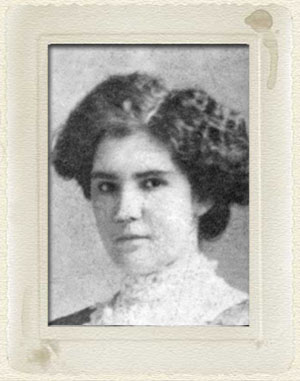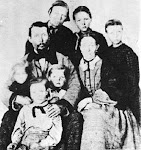View of the Commanding General’s Quarters, Camp Floyd, Utah Territory, January 1859
Photography by C. C. Mills, National Archives
(COMMENT: In 1862 the troops of Johnston’s army stationed at Camp Floyd in Cedar Canyon southwest of Salt Lake City were called to return to the eastern states to help with the Civil War, which was waging there from 1861 to 1865. Upon leaving Camp Floyd they saved many miles of travel by going directly up Provo Canyon on their way back east. Many of the settlers were able to obtain good wagons from the soldiers as they passed through the valley.) — from a DUP printing, no name, no page.
But now that winter was over, what would Johnston’s army do? It was still a serious threat to the Mormons. The leaders were faced with a tough decision. And it was a tremendous undertaking, once the decision was made. The story is told in the book, Church History in the Fullness of Times.
Following President Young’s direction, some thirty to thirty-five thousand Saints living north of Utah Valley evacuated their homes and moved south to avoid conflict with the army when and if it should arrive later in the year. Each ward was allotted a strip of land in one of four counties south of Salt Lake County. The move took almost two months, and was completed by mid-May. A daily average of 600 wagons passed through Salt Lake City during the first two weeks of the month.
One Pioneer wrote: “During that exodus I shall never forget the distress and poverty of the people. I have seen men wearing trousers made of carpet, their feet wrapped in burlap or rags. Women sewed cloth together and made moccasins for their feet. Many women and children were barefoot. The people were practically all poor for we had had several years of great scarcity of crops because of the grasshoppers.” Upon arriving at their destination, families lived either in the boxes of their heavy covered wagons, canvas tents, dugouts, or in temporary board shanties and cabins.71
Church records and assets were removed or buried. The foundation of the Salt Lake Temple was covered over and leveled so that the plot would resemble a plowed field and remain unmolested, and all the stone that had been cut for it was hidden. Twenty thousand bushels of the tithing grain was boxed in bins and transported to specially erected granaries in Provo. Additional wagon trains carried machinery and equipment to be housed in hastily constructed warehouses and sheds.
The enemy realized that the Mormons meant business–they were determined in their purposes. Finally, due mainly to officials who were friendly towards the Mormons, particularly Thomas L. Kane who was especially helpful, negotiations were made between the army officials and the Mormons. Brigham yielded the Governor’s seat to Alfred R. Cummings, and the troops were allowed to march through the deserted city of Salt Lake. With their animals, wagons, cannons, supplies, etc. they traveled west of Utah Lake to Cedar Valley where they established Camp Floyd.
Then on July 1, 1858 Brigham authorized the return of the bedraggled Saints to their homes. The United States army stayed at Camp Floyd for some length of time. The negative effect of which was the introduction of various vices into Utah. Gambling places, saloons, and houses of prostitution were built.72
71- Church History in the Fullness of Times, p. 376 – Evacuation of Salt Lake







No comments:
Post a Comment